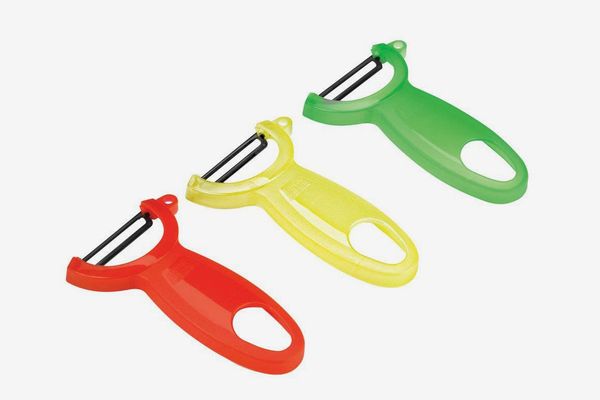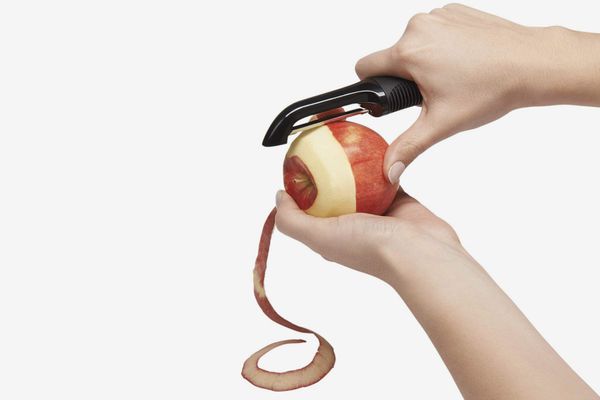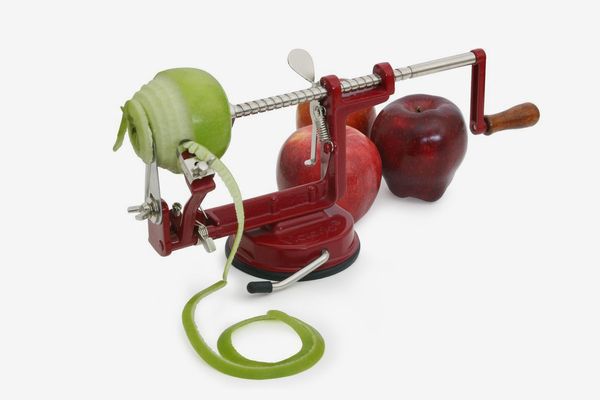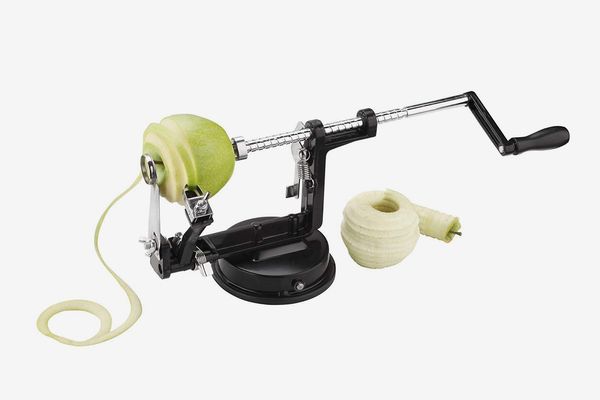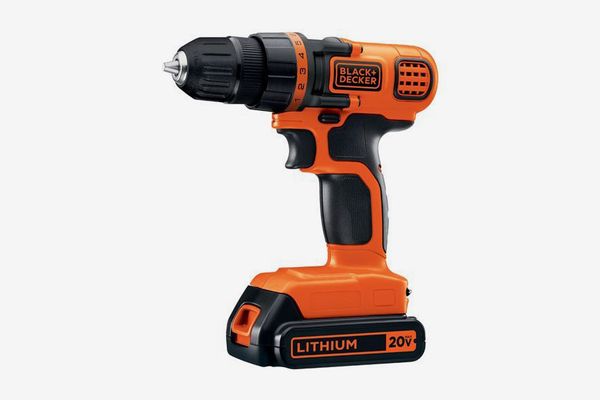
If you’ve ever made apple pie, tarte tatin, apple crisp — really, any recipe that calls for a pound or more of fresh, peeled apples — you know how tedious peeling and coring fruit can be. It’s a task only made more challenging when you don’t have the right tools, specifically a good, sharp apple peeler. To find the best way to peel an apple, I spoke with six New York City–based bakers and pastry chefs known for their apple pies and other fruit-forward desserts about the tools they use to peel apples, both in their shops and at home. Here are five of their favorite apple peelers and techniques to make your fall baking a little easier.
The standard peelers in most professional kitchens are the Kuhn Rikon Swiss peelers; as chef Jordan Andino told us back in 2016, a Kuhn peeler was one of the must-have kitchen tools he needed while working at the French Laundry. And though they’re real multitaskers in the kitchen, they’re especially good for apples. These peelers are inexpensive — as little as $3 each when you buy in packs — and they’re readily available at most restaurant supply stores.
That doesn’t mean they’re low-quality, though. “They are easy to use, clean, and replaceable when the blade wears down,” says Nina Brondmo, owner of Bakeri in Williamsburg. Because they’re so cheap, you can just toss the peeler when it’s dull and start with a new one. They’re also fast, says Neil Kleinberg, chef and partner at Clinton Street Baking Company, and make quick work of apples, which is important in a restaurant where you’re dealing with bushels of fruit at once, or at home when you want to get through peeling as fast as possible without slicing yourself.
For home use, Kleinberg prefers the classic OXO peeler with black rubber handle. “It’s sharp and comfortable, and lasts a long time,” he explains. Unlike the Swiss peeler, which you pull toward you in order to get the skin off the fruit, this swivel-head one can be used by pushing the blade away from you, making it a slightly safer option for those intimidated by sharp objects or worried about nicking fingers. It is a little slower going, though.
The next type of apple peeler are the stand-alone machines, like the Johnny Apple Peeler, which are surprisingly inexpensive when you consider how sturdy they are. “At Bubby’s, where we make so many apple pies, the thing lasts a couple years. So it will probably last the average person two generations, which is always nice,” the restaurant’s chef and owner Ron Silver explains. But just because it’s a big hunk of metal doesn’t mean it’s hard to use. With one turn of the handle, it can core, slice, and peel, though Silver mostly uses the peeling and coring functions and then hand-cuts chunks for pies.
The Little Pie Company’s owner and creator Arnold Wilkerson recommends a similarly styled machine called the Peel Away (which is now discontinued), also made of cast iron with a suction cup on the bottom to prevent it from slipping and sliding. For him, the benefit of this kind of dedicated apple corer and peeler is how fast it works. “With the little Peel Away device, we were able to peel and core a full case in about 30 minutes,” he said in an email. “It takes about five pounds of apples for the homemade apple pie, with the Peel Away machine that task can be completed in less than ten minutes.”
If you’re looking for something even cheaper than the Johnny Apple Peeler, but with the same functionality, Paige McMahon, pastry chef at Meyers Bageri in Grand Central’s Great Northern Food Hall, recommends this one from VonShef. “This peeler takes all the tedious work out of pies, so you can turn your attention to getting your crusts just right,” she says. “Most importantly, if you take care of this peeler, it will take care of you. Clean it well, and there is very little other maintenance needed.” However, she warns, “Make sure the suction cup on the bottom is well-locked or your peeler and apples are going flying.”
For the folks who are really trying to maximize their speed, pastry chef Dominique Ansel has created a wild device to do just that, by connecting one of these old-school hand-crank peelers to a standard power drill.
“It will work with any hand-crank peeler and standard power drill,” says Ansel. “You attach the drill head to the front of the peeler, and when you start drilling, the peeler will start turning and peeling your apple.” There’s no name for this jury-rigged device, it’s just something he thought could help his team peel apples faster for Dominique Ansel Kitchen’s annual (and already sold-out) Pie Night, where they serve unlimited slices of ten different types of pies.
The use of a power drill is definitely an aggressive choice, and maybe not for the average consumer, but when you’re dealing with hundreds of pounds of handpicked apples, it starts to seem like a less crazy idea.
The Strategist is designed to surface the most useful, expert recommendations for things to buy across the vast e-commerce landscape. Some of our latest conquests include the best acne treatments, rolling luggage, pillows for side sleepers, natural anxiety remedies, and bath towels. We update links when possible, but note that deals can expire and all prices are subject to change.
Every editorial product is independently selected. If you buy something through our links, New York may earn an affiliate commission.

